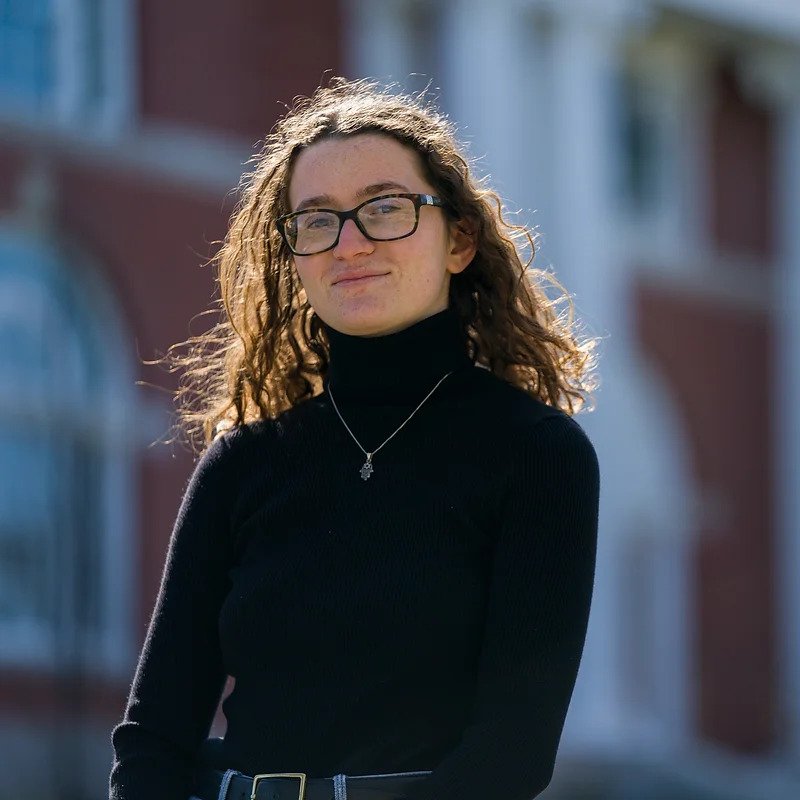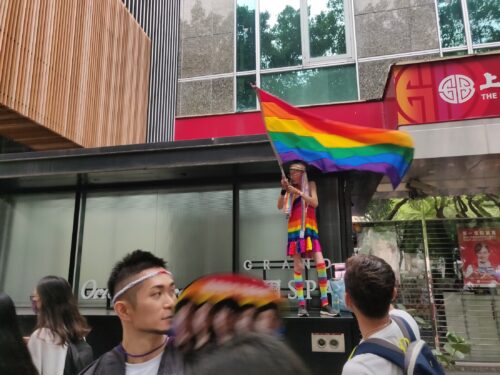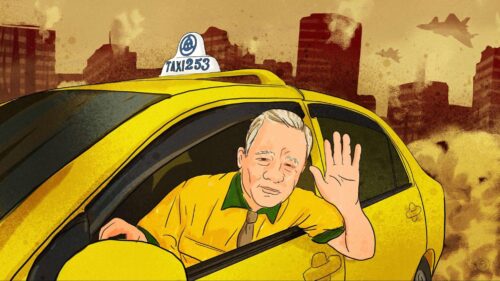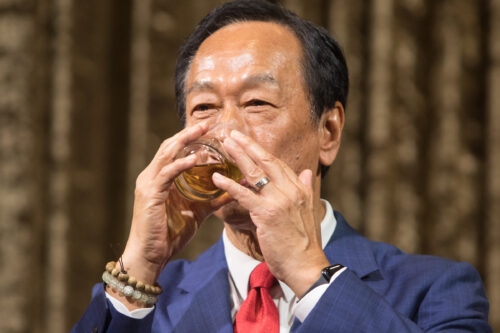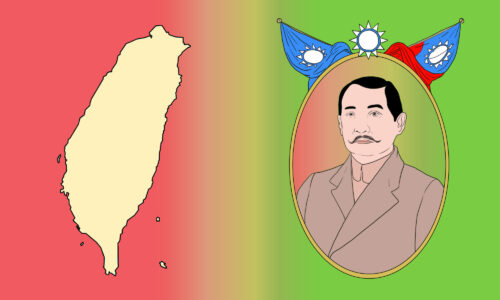Taiwan’s unrecognized indigenous tribes are reviving dead languages to achieve recognition
There are currently 16 officially recognized indigenous peoples in Taiwan. Some of the Pingpu — which comprise 10 groups on the island’s lowlands — are lobbying for recognition, and they’re doing it by reviving lost languages and culture.

Long before Chinese settlers came to the flat, sprawling lands of the Pingtung Plain — the southern Taiwanese county now known for its pineapple and mango production — the area was inhabited by Pingpu (plains indigenous) tribes like the Makatao. Waves of colonization pushed indigenous tribes from their ancestral lands and closer to the mountains, or in some cases, to the other side of the island.
It was originally with the goal of land rectification that Pan Enbo, a member of the Laopi Makatao tribe in today’s Pingtung and then chairman of the Laopi Makatao Cultural Association, began digging through national and local archives in 2016. But something unexpected happened: He stumbled across pages and pages of records written in the native Makatao language, which had been dormant for decades.
“After the association was established,” Pan said, “we started to notice that it was quite strange that outsiders couldn’t understand what we were saying. Why can Han people not understand us? Because we are different. We really have no relation to mainland China.”
Pan became obsessed: He traveled to the national archives in Taipei and began collecting all available documentation until he had a total of 24 compact disks full of information. Seven years later, he produced a 70-page dictionary of all the words and phrases he was able to find and translated them into Mandarin Chinese characters and romanization.
Across the island, Leyo Kana, a member of the Eastern Makatao in Hualien, spends his days traveling door to door to interview elder tribe members to identify Makatao vocabulary intermixed with their spoken Hokkien. He has also helped the community revive the long-dormant night festival, an annual Makatao ritual ringing in the new year.
“Taiwanese and the Makatao language have blended together,” Kana explains. “So many of the older residents, since they identified as Fujianese, always thought they were speaking Taiwanese.”
The Makatao language’s revitalization is more than just an effort to preserve an endangered language. It’s part of a long-term strategy to include the 10 Pingpu groups among the Taiwanese government’s officially recognized indigenous peoples. In addition to the Makatao, the Siraya, Taokas, and Papora peoples — all indigenous groups that fall under the Pingpu classification — have active preservation movements aimed at achieving recognition.
Only 16 indigenous groups are currently recognized by the national government, while the Pingpu have largely been seen as fully assimilated into Han Chinese culture. The Council of Indigenous Peoples (CIP) — the government ministry tasked with managing indigenous affairs — has actively opposed Pingpu recognition for fear that it could water down government-allotted resources and political representation. The CIP has estimated that some 980,000 people could attempt to register as Pingpu if the group becomes recognized, raising the proportion of indigenous people in Taiwan from 2 percent to 6 percent.
But Pingpu groups have said this estimation is overblown and has been used to fuel unfounded worries about resources and political positions. Activists have been fighting local and national governments for decades through grassroots activism and legal battles.
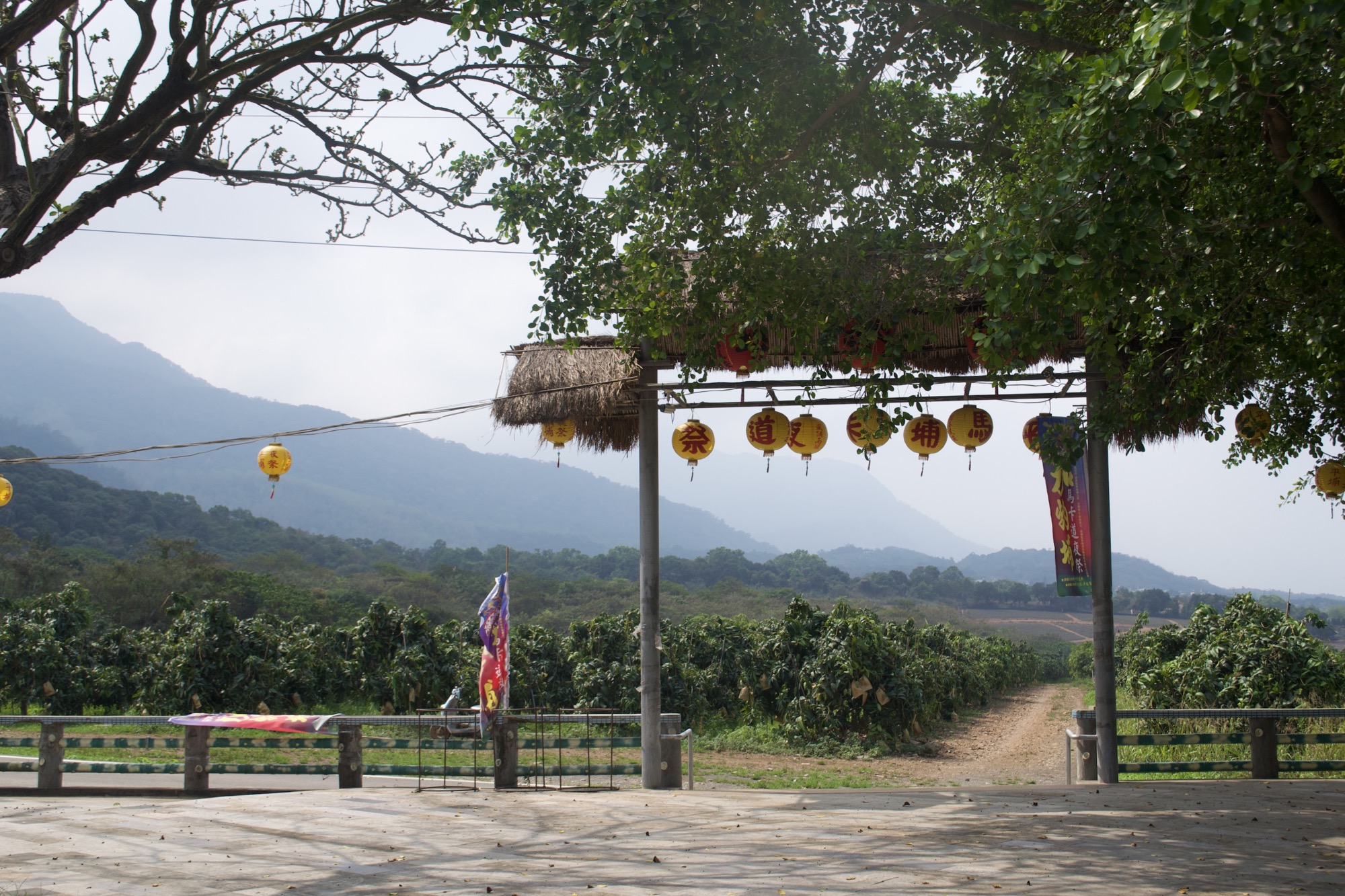
The Siraya achieved a historic victory last year when a Constitutional Court determined that they and other Pingpu groups’ lack of official recognition as indigenous was unconstitutional. It gave lawmakers three years to pass legislation or change existing laws that would allow Pingpu peoples to register as indigenous under requirements that they present documentation verifying their indigenous identities, preserve cultural characteristics like language, and maintain their ethnic identity.
The promise of recognition has created a sort of “chicken and egg” situation when it comes to language and culture revival, said Jolan Hsieh, a Siraya activist and indigenous studies scholar at National Dong Hwa University in Hualien.
“If you don’t have recognition, then you cannot have enough resources to push and to do language revitalization,” Hsieh said. “But if you don’t learn and prove that you still have this important cultural relevance, then you get more challenges to political recognition. So you need to work on both sides together.”
The long road to revival
In a classroom in a Tainan City public school, Uma Tavalan is teaching two non-indigenous students the Siraya language, a Pingpu language deemed extinct by UNESCO.
They practice basic formalities and sentences, switching between Mandarin, Siraya, and English. Today’s lesson is all about food: “What do you like for breakfast?” (Kamang ta kamuyen oho ka idamen?) “I like to eat bread and drink milk.” (Mamuy ko ka kanen ta paul mit apa ki haley.) Tainan is currently the only administrative region in Taiwan that hosts Pingpu language classes in public schools due to the Siraya’s local recognition in Tainan County.
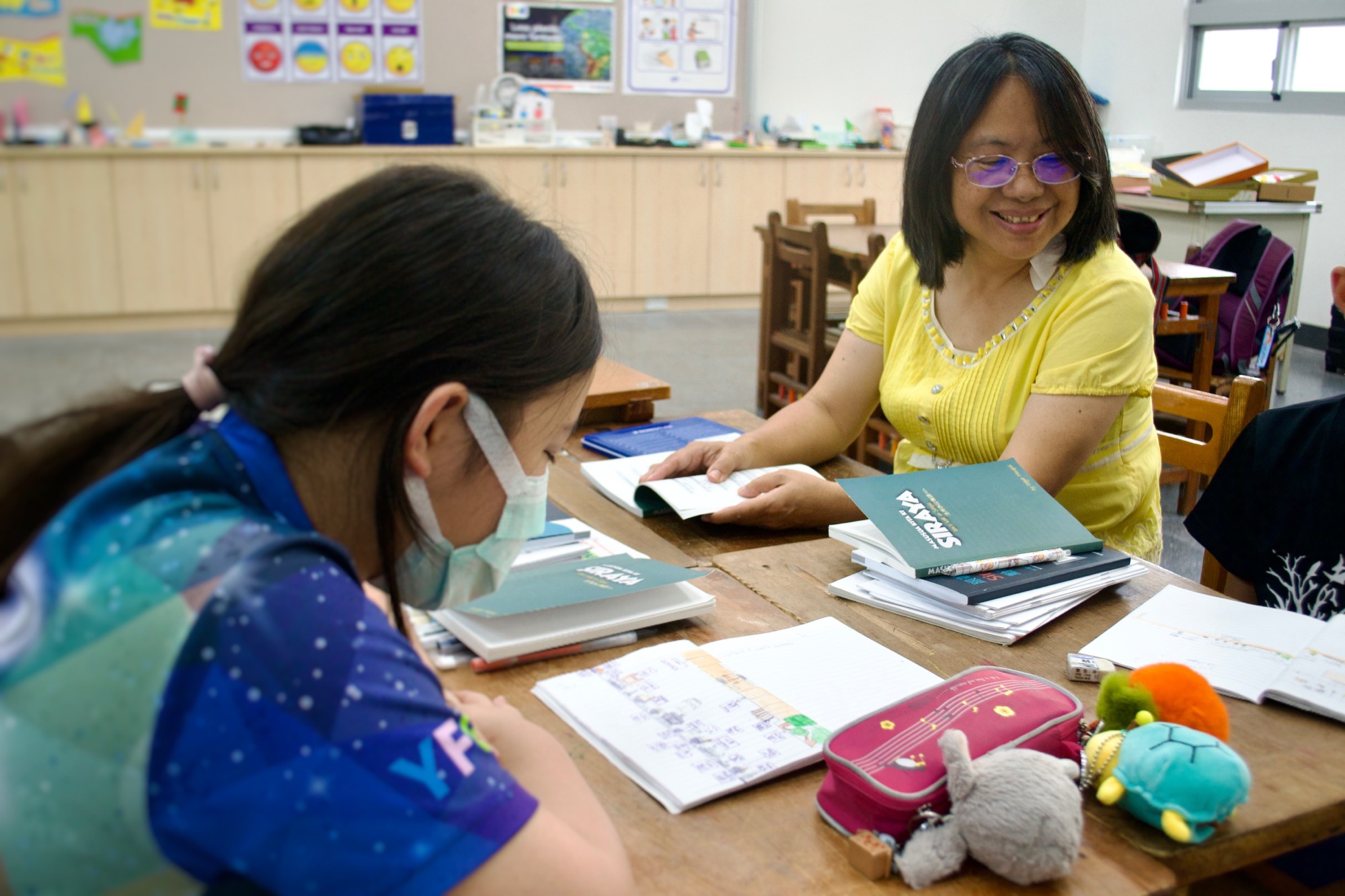
The students study from books and materials prepared by Tavalan’s family and her husband, Edgar Macapili, the fruits of a decades-long fight for language revival and recognition.
A devout Christian, Tavalan first met Macapili in Macapili’s home country of the Philippines at the Asian Institute for Liturgy and Music, an institution attracting Christians from across Asia. The couple moved back to Tainan when they decided to get married in 1992, shortly after the lifting of Kuomintang martial law, which had until then suppressed Taiwanese and indigenous identity. It was around this time that the Pingpu consciousness and recognition movement began.
When they returned to Taiwan, Macapili remembers, Christianity was still observed with heavy European and American influence. They began asking themselves, “How could we express our faith in a Taiwanese way? And not only in a Taiwanese way, but in a Siraya way?” Macapili said.
That’s when Macapili stumbled across a version of the Gospel of St. Matthew written in English, Dutch, and Siraya, now one of the most important primary sources preserving the Siraya language.
When Dutch colonizers arrived in Tainan in 1624, missionaries stationed there used Siraya to help carry out government affairs with indigenous peoples, believing all groups could speak and understand the same language. They translated the gospels of St. Matthew and St. John into Siraya and led church services in the Siraya native tongue. The preservation and use of the language declined in importance after the departure of the Dutch as Hakka and Fujianese settlers populated Southern Taiwan in increasing numbers. Researchers believe the language died out in the early 20th century.

Under Qing rule (1683–1895), indigenous peoples were classified into two categories: shēngfān 生蕃 (“wild/uncivilized” aborigines in the eastern and mountainous regions) and shúfān 熟蕃 (“tamed” or “cooked” aborigines in the central mountain or eastern plains regions like the Siraya), classifications that the Japanese maintained and further defined. By the end of Japanese rule, the shufan classification was changed to “plains indigenous” (平埔族 píng pǔ zú).
The Nationalist government changed the registration of indigenous peoples (shānbāo 山胞 or “mountain compatriots”) to “mountain-area shanbao” (山地山胞 shāndì shān bāo) and “plains shanbao” (平地山胞 píngdì shān bāo), but excluded the aforementioned Pingpu peoples in the process. Although the government ordered officials to encourage the Pingpu to register during a few allotted time periods, those who missed the deadline never achieved indigenous status. Many likely abstained from the opportunity due to the stigma that came with being indigenous — that negative association contributed to language loss.
An ongoing slow reversal of that stigma has contributed to the growing momentum of the Pingpu recognition and revitalization movements. In 2016, Tsai Ing-wen (蔡英文 Cài Yīngwén) formally apologized to indigenous peoples on behalf of the Republic of China. Still, activists haven’t let up on the Tsai administration and its promises to rectify the identities and rights of the Pingpu peoples and work toward greater self-governance rights and transitional justice for indigenous peoples.
“The fact that the original ethnic groups who existed on this land for thousands of years have completely become ethnic Han Chinese, I think, is a kind of cruel history,” Kana said. “All of the southwestern and northern indigenous peoples suffered colonial destruction, the erosion of land, and the loss of their cultural identity, the Pingpu people were the fastest…so I think ‘transitional justice’ should be used to restore Taiwan’s true history.”
These categorizations later influenced the 2011 Status Act for Indigenous Peoples, which limited the definition of indigenous peoples to “mountain-area shanbao” and “plains shanbao.” The law has been used against previous legal arguments for Pingpu recognition. But the 2022 Constitutional Court ruling finds that all Austronesian peoples are protected under Taiwan’s constitution.
“This protection,” the ruling finds, “unless stipulated expressly in Constitutional Amendments, cannot be detached from certain Taiwanese indigenous peoples, just for the reason that competent authority arbitrarily defined what constitutes indigenous peoples.”
By 1987, when martial law had lifted, most with Pingpu ancestry began rediscovering their identities for the first time. Some, like Kana’s family, had grown up believing their ancestors were Han Chinese from Fujian before discovering the shu marker on household registration documents. None remained who could speak their indigenous language fluently; those who had some vocabulary mixed into their speech always thought they were speaking Taiwanese.
So when the Siraya-language gospel landed in the hands of Macapili and Tavalan, “it was completely unfamiliar to us,” Tavalan said. “Already for 100 or 200 years, we spoke Taiwanese. We can study Siraya, but no longer have the [language] environment. And there is no policy to support us.”
But Macapili, whose mother tongue is the native Philippine language Cebuano or Bisaya, could.
“When I opened it and read it,” Macapili remembers, “I thought, this is like my mother language!” Pronouns, numbers, grammar, verb conjugations, and syntax were — if not identical to Bisaya — very similar.
Since the discovery of the Siraya Gospel of St. Matthew, Macapili, Tavalan, and their family members have worked to spark a revival of the Siraya language and have achieved the impossible. As of 2018, 19 public schools in Tainan teach Siraya; one of them teaches the language as a requirement for the first six years. Siraya Presbyterian churches in particular have embraced the language in church services and songs, many composed by Macapili.

The road ahead
The Siraya are an exceptional example of a relatively successful language revival movement among the Pingpu. Lesser-resourced tribes like the Makatao have found themselves stuck in the chicken-and-egg paradox, limited by a lack of resources. The Makatao have achieved local recognition in Pingtung County, which has led to some some financial support for cultural preservation, but Pan says that money hasn’t reached him. Grassroots efforts spearheaded by organizations or individuals like them can only achieve so much.
For now, Pan’s dictionary is finding use among scholars interested in Pingpu languages, but has yet to reach a larger — and younger — audience. Identified vocabularies are still not enough to teach Makatao in the classroom, says Pan. Many tribe members also do not know how to read the romanized Makatao words Pan has prepared. Short on resources, all that can be done now is await the legal change.
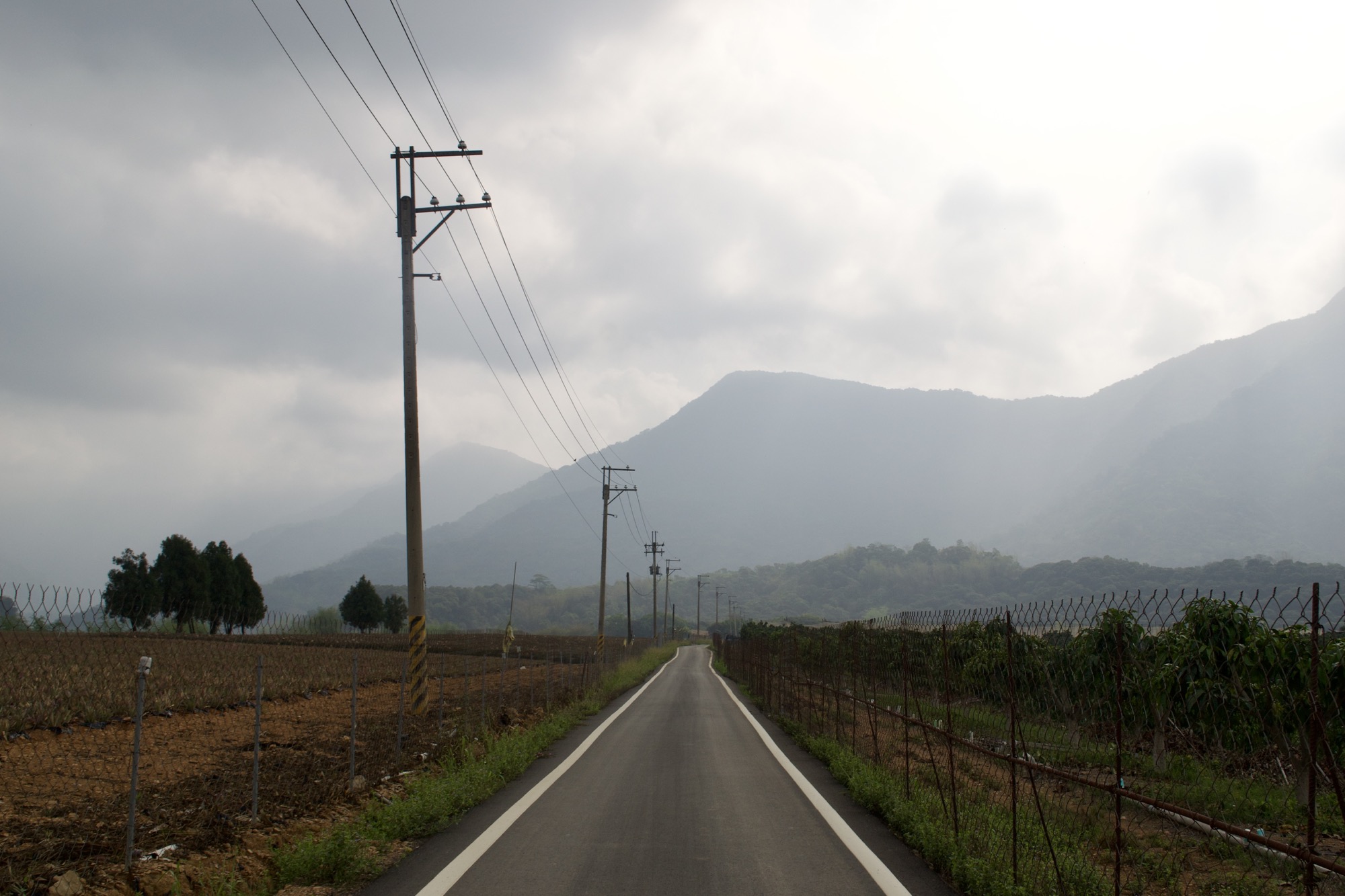
With six months already passed since the court ruling, activists are trying to advance the process as quickly as possible so they may have the opportunity to elect a representative in the January 2024 elections. They continue to lobby politicians and presidential candidates to support legal changes that would be most beneficial to the Pingpu peoples.
The government is likely to either create an additional law that affirms Pingpu indigeneity or make changes to the Status Act for Indigenous Peoples. The best option, Hsieh says, is both.
“We need to amend the current Indigenous status law to make the Plains Indigenous [status] more open. They want to add a third category of Pingpu people. You can add a third category, but you need to treat all three groups the same,” Hsieh says.
Siraya activists still ultimately see the ruling as a win. Acknowledging Pingpu indigeneity is only the first step toward justice, says Hsieh. The fight is far from over.
